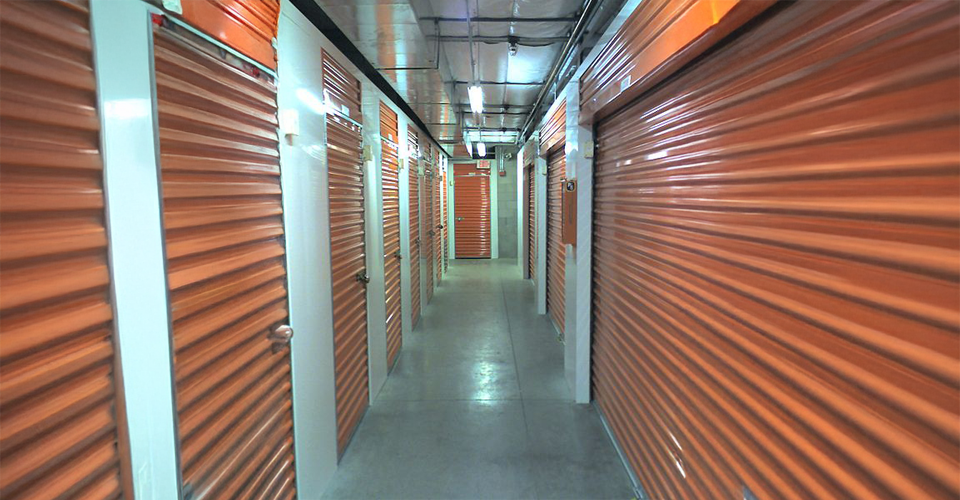 Preventing the accumulation of moisture in your storage unit is an imperative step in protecting your belongings. Excessive dampness in your unit will promote the growth of mold, mildew, rust, corrosion, rot and insect infestations. Items particularly susceptible to moisture damage include photos, electronics, clothing, furs, wood, leather, and mattresses.
Preventing the accumulation of moisture in your storage unit is an imperative step in protecting your belongings. Excessive dampness in your unit will promote the growth of mold, mildew, rust, corrosion, rot and insect infestations. Items particularly susceptible to moisture damage include photos, electronics, clothing, furs, wood, leather, and mattresses.
If you will be storing any of these items you will want to take the proper preventative measures to limit the level of moisture in your storage unit---especially if you live in a particularly humid climate. This guide will offer you several suggestions to easily combat moisture levels and effectively protect your belongings while they are in storage.
Check for leaks
It you are using an outdoor storage unit, check for any leaks before renting. This is the easiest way to prevent water damage to your property. Take notice of any cracks in the walls or ceiling, no matter how small--they can easily widen over time and allow for damage-causing leaks.
Ask about the humidity level
If you are using an indoor unit, inquire about the humidity level. The relative humidity in a storage facility should be below 50 percent to prevent moisture damage, rust, mold, wood rot, and mildew growth. You can purchase a relative humidity gauge at most hardware stores and install it in your unit to monitor the RH yourself.
Never store anything that's damp
Before packing your belongings away in your storage unit, verify that everything is dry and free of dampness. If you wash your clothes prior to placing them in storage, check to make sure that they are completely dry. Before packing away any aquatic equipment (surfboards, scuba gear, wet suits, bathing suits, etc.) confirm that everything is thoroughly dried and free of moisture. Anything wet or damp that is placed inside your unit will contribute to the moisture level in the air.
Install a vapor barrier
A vapor barrier is a polyethylene plastic or foil coating used to damp-proof any room or space. They are typically thin, flexible membranes with a permeability value of less than 1.0. They should be installed on the warm side of the storage unit's wall to block outdoor moisture as well as beneath the floor to inhibit ground moisture from seeping inside. You can purchase vapor barrier from most hardware or home goods stores.
Make homemade desiccant packs
Using a piece of fabric, create a pouch filled with moisture-absorbing crystals, such as silica gel. Sew two squares of fabric together on three sides to create a pocket. Turn it inside out, and fill with silica crystals. Fold in the top, pin it shut and then sew it closed. Hang the desiccant bag inside your storage unit.
Silica gel can absorb 40 percent of its weight in moisture. However, after a period of time the crystals will need to be regenerated. Simply remove them from the pouch and place them on a baking sheet (do not use one that you will cook with as well, because silica gel is not food-safe). Place the sheet in the oven at 300 degrees Fahrenheit for about three hours to dry out the gel for reuse. Allow it to cool before placing it back in the pouch.
Use charcoal
A natural alternative to desiccants, charcoal briquettes can also be effective in absorbing moisture and eliminating musty odors. You can place them inside pouches like the silica gel, place them inside a basket or bucket lined with plastic or foil, or set them on a metal tray. Be careful not to set them against anything that you wouldn't want stained or marked--charcoal stains can be extremely difficult to remove. Also, make sure you do not use the briquettes that are pre-soaked in lighter fluid.
Every 30 to 60 days, replace the briquettes to keep the air in your storage unit fresh.
Use kitty litter
Another natural option for removing moisture is clay cat litter. You can simply place an open bag of kitty litter inside your storage unit, or pour it into a bucket. The clay effectively absorbs the moisture in the air and prevents the growth of mold and mildew. Kitty litter may need to be changed every several weeks to maintain optimum freshness.
Properly protect your belongings
Making sure all of your possessions are adequately packed and protected is an important preventive method in limiting moisture damage. Make sure all furniture and mattresses are wrapped and covered with furniture blankets, then covered with a plastic sheet to keep out moisture (never place plastic directly against furniture). Clothing and furs should be cleaned before going into storage and hung inside wardrobe boxes. You should also place your possessions on top of wooden pallets if your unit has a concrete floor--this will keep them away from condensation.
Use climate-controlled storage
The best, albeit most expensive, way to combat moisture in a storage unit is to rent one that is climate-controlled. If you will be storing a lot of items that are especially susceptible to damage due to extreme temperatures or humidity, you may want to consider this option. Some of these belongings include: electronics, vintage clothing and furs, antiques, and leather or wood furniture.